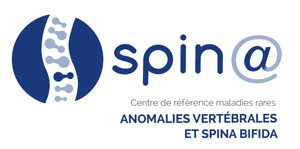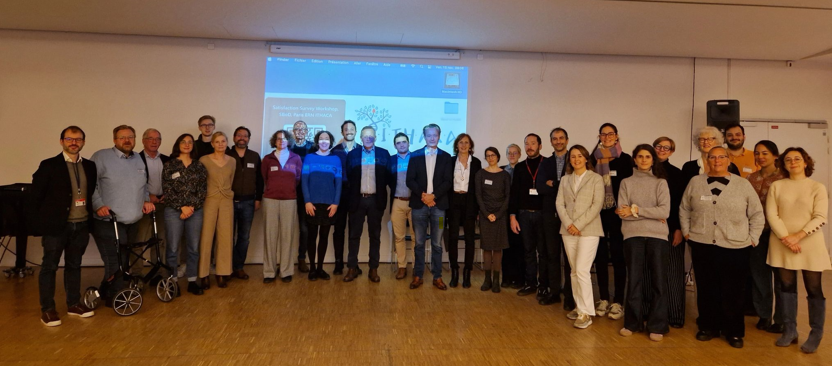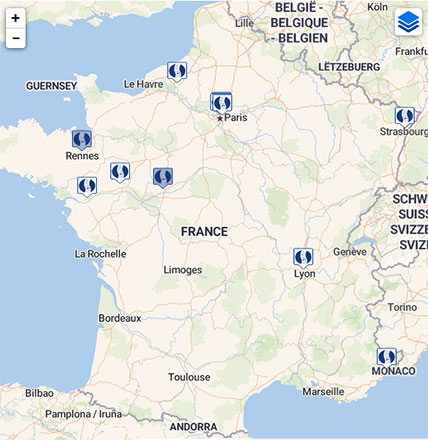
News
No news have been found.
-
Workshop, SBoD Work Group – ERN ITHACA, eUROGEN, ERKnet – 14-15 November 2024 – Paris APHP
This two-day workshop, held from November 14-15, offers an in-depth exploration of current research and advances in genetic and perinatal…
-
SBoD webinar on the new classification of dysraphisms
This is a series of webinars on spinal dysraphism organised jointly by ERN eUROGEN, OMNI-NET Ukraine and the International Federation…
-
SBoD: New article on prenatal diagnosis of open dysraphism
The European SBoD (Spina Bifida and other Dysraphisms) working group, co-chaired by Professor Jean-Marie Jouannic, has published a new article…
Our publications
[Fetoscopic myelomeningocele repair (with video)]
Guilbaud, Lucie; de Saint Denis, Timothée; Irtan, Sabine; Jouannic, Jean-Marie
In: Gynecol Obstet Fertil Senol, 2025, ISSN: 2468-7189.
@article{pmid41046909,
title = {[Fetoscopic myelomeningocele repair (with video)]},
author = {Lucie Guilbaud and Timothée de Saint Denis and Sabine Irtan and Jean-Marie Jouannic},
doi = {10.1016/j.gofs.2025.09.087},
issn = {2468-7189},
year = {2025},
date = {2025-10-01},
journal = {Gynecol Obstet Fertil Senol},
keywords = {},
pubstate = {published},
tppubtype = {article}
}
Dhombres, Ferdinand; de Saint-Denis, Timothée; Thompson, Dominic; Tahraoui-Bories, Julie; Lucano, Caterina; Rath, Ana; Mosiello, Giovanni; Jouannic, Jean-Marie; ; ; and,
In: Orphanet J Rare Dis, vol. 20, no. 1, pp. 348, 2025, ISSN: 1750-1172.
@article{pmid40629359,
title = {Revised orphanet nomenclature and classification for spina bifida and other spinal dysraphisms (SBoD)},
author = {Ferdinand Dhombres and Timothée de Saint-Denis and Dominic Thompson and Julie Tahraoui-Bories and Caterina Lucano and Ana Rath and Giovanni Mosiello and Jean-Marie Jouannic and and and and },
doi = {10.1186/s13023-025-03856-4},
issn = {1750-1172},
year = {2025},
date = {2025-07-01},
journal = {Orphanet J Rare Dis},
volume = {20},
number = {1},
pages = {348},
abstract = {BACKGROUND: The Spina Bifida and other Dysraphisms working group (SBoD WG) is an interdisciplinary group, comprising experts on spinal dysraphism from 11 European countries. In 2022, the SBoD WG was tasked by 2 European Rare Disease Networks (ERN ITHACA and ERN eUROGEN) to revise the Orphanet classification of spinal dysraphism. Over the past two decades numerous subcategories of spinal dysraphism have been described in the medical literature resulting in a proliferation of terms, numerous synonyms and variously applied definitions. In the light of this, a revision of all terms and definitions was conducted by a Delphi approach in 3 steps by neurosurgeons (fetal/paediatric/adult), urologists (paediatric/adult), rehabilitation medicine specialists, fetal medicine and perinatal imaging specialists, geneticists, pathologists, nephrologists and patient representatives, all members of the International Federation for Spina Bifida and Hydrocephalus (IFSBH).nnRESULTS: In the first instance, 39 experts reviewed and refined the terminology that could be used to describe the anatomical characteristics of all forms of SBoD. At the second stage, 24 experts established terms and unambiguous definitions for 16 skin findings, 7 bone findings and 33 spinal cord findings that were considered essential features capable of describing all forms of spinal dysraphism. In the third stage, 29 experts validated 24 spinal dysraphic anomalies using these pre-agreed findings. All terms and definitions were validated by vote with a threshold of 80% approval (abstention was permitted). No terms with disagreement were retained in the subsequent classification. The revised SBoD classification was transferred to the Orphanet nomenclature (ORPHA:823). 16 existing ORPHAcodes were deemed obsolete, 10 ORPHAcodes were updated (terms and/or textual definitions) and 25 new ORPHAcodes were created. The SBoD working group also developed a 'decision tree' for new users, to assist them in the practical aspects of applying the revised classification and designating appropriate ORPHAcodes.nnCONCLUSIONS: An update of the Orphanet Classification of spinal dysraphism was conducted by a European interdisciplinary group of experts encompassing all aspects of healthcare for patients with these disorders. This new classification, based on essential skin, bone and spinal cord findings offers a more logical and reproducible means to categorise SBoD. It is hoped that this will permit more precise disease delineation, consistent diagnostic accuracy and better prognostication.},
keywords = {},
pubstate = {published},
tppubtype = {article}
}
Dugas, Anaïs; Guilbaud, Lucie; de Saint-Denis, Timothée; Lallemant-Dudek, Pauline; Simonnet, Hina; Perre, Saskia Vande; Blondiaux, Eléonore; Garel, Catherine; Jouannic, Jean-Marie
In: Prenat Diagn, vol. 45, no. 5, pp. 668–675, 2025, ISSN: 1097-0223.
@article{pmid40237726,
title = {Outcome of Children With Prenatally Diagnosed Saccular Limited Dorsal Myeloschisis: The Importance of Accurate Diagnosis},
author = {Anaïs Dugas and Lucie Guilbaud and Timothée de Saint-Denis and Pauline Lallemant-Dudek and Hina Simonnet and Saskia Vande Perre and Eléonore Blondiaux and Catherine Garel and Jean-Marie Jouannic},
doi = {10.1002/pd.6800},
issn = {1097-0223},
year = {2025},
date = {2025-05-01},
journal = {Prenat Diagn},
volume = {45},
number = {5},
pages = {668--675},
abstract = {OBJECTIVE: To describe outcomes at 36 months of age in children with prenatally diagnosed Limited Dorsal Myeloschisis (LDM) and compared to Myelomeningocele (MMC).nnMETHOD: This was a retrospective study of all successive patients with postnatal confirmation of a prenatal diagnosis of isolated LDM who were referred to a French National Reference center from 2014 to 2023 compared with MMC cases. Postnatal evaluation at 36 months of both dysraphisms comprised standardized multidisciplinary evaluations.nnRESULTS: Of the 245 fetuses referred with suspected MMC, 19 were prenatally diagnosed with LDM. Nine children reached 36 (± 4) months of age. All were walking. Two required clean intermittent catheterization (CIC) and three required laxatives. Sphincter functions seem to be more dysfunctional in the case of sacral LDM. None were reported to have a ventricular shunt nor having neurodevelopment impairment. The LDM children differed from the MMC children in all functions with significantly more asymptomatic children in the LDM group (LDM: 5/9 vs. MMC: 0/12, p < 0.01), better motor (independent walking; LDM: 7/9 vs. MMC: 2/12; p < 0.01), urinary (need for CIC; LDM: 2/9 vs. MMC: 10/12; p < 0.01) and cognitive (neurodevelopmental impairment; LDM: 0/9 vs. MMC: 4/12, p = 0.10) functions.nnCONCLUSION: LDM show better motor, urinary, and cognitive functions than MMC.},
keywords = {},
pubstate = {published},
tppubtype = {article}
}



